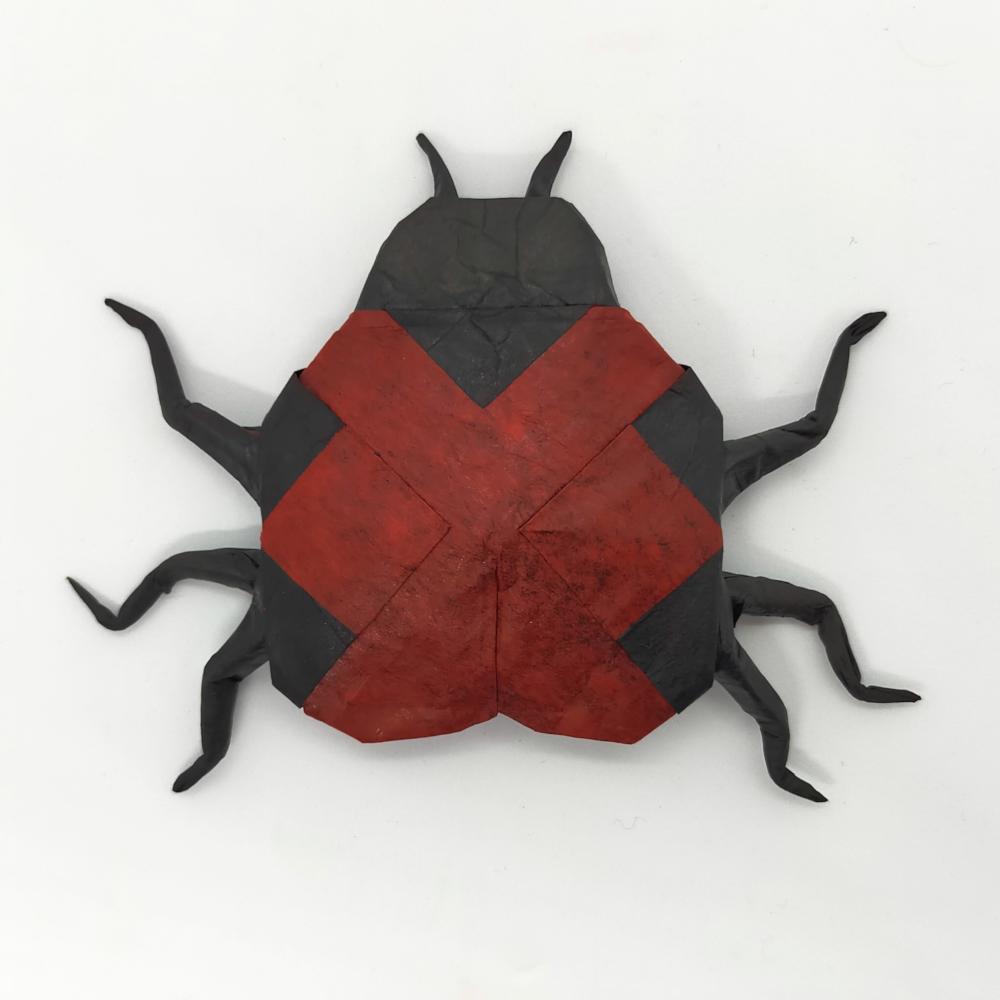Foreword

Hello, my name is Sam Hesp and I love origami! Ever since about the age of four, I have enjoyed the challenge of trying to turn a (usually) square sheet of paper into something beautiful and meaningful. It has always amazed me how such an incredibly simple starting point has seemingly endless possibilities, from twisting geometric figures and tessellations to insects with countless appendages to fire-breathing dragons with a full plate of scales. I began folding origami by following simple tutorials and books with small squares of kami or printer paper. I went through the classics, but I was not satisfied with the simple crane or chatterbox, or even the samurai helmet, so I began searching for greater challenges. As my skills improved, I came across models from the likes of Robert Lang, Satoshi Kamiya, Shuki Kato, and countless others who are responsible for the incredible diversity and high level of origami today. I began to move off video tutorials and started to focus purely on the diagrams found in my growing book collection. I could now enjoy origami at my own pace, and there were diagrams to suit nearly every level of difficultly. For years this is how I progressed, and I came across amazing designs such as the Ancient Dragon by Satoshi Kamiya and the Black Forest Cuckoo Clock by Robert Lang. While this was great, I started to feel I was missing out on perhaps an even greater challenge: folding models from their crease patterns. At first, I could not understand how to even begin navigating the myriad of creases that form the scaffold of every model, let alone turn this base into a life-like figure. However, slowly but surely patterns began to emerge from the maze. Alternating lines formed pleats, triangles inside grids gave way to what I now know as Elias stretches, and lines bisecting right angles formed bird bases. I could then use what I learned from the diagrams to shape the model to my taste, turning geometric bases into realistic figures. As my understanding of crease patterns improved, I began designing my own models. At first, these were just free folded, with lots of trial and error and no clear goal in mind, just experimenting with new combinations of creases. However, I soon realised I could use crease patterns to design with a particular figure in mind, and this has become one of my favourite aspects of origami.
The inspiration for this website was the increasingly cluttered "Origami" folder on my computer, and so I came up with a way to better organise my designs: a classification system! The idea was to group similar designs into groups, starting broad before getting more and more specific, just like how scientists classify living things (i.e., kingdom, phylum, class, order, family, genus, species). Because of the branching nature of this type of classification, the obvious choice was a nested dropdown menu, as can be found on the side navigation to the left (or top navigation if you’re viewing on a smaller device). You can click on any of my designs to download a free crease pattern, all drawn out in Oriedita. The gallery section of my website showcases my best fold of other peoples’ designs, with links to where you can buy the diagrams or crease patterns, sometimes put out for free. The rest of my website outlines the resources, both digital and paperback, that have been so fundamental to my progress as an origamist.